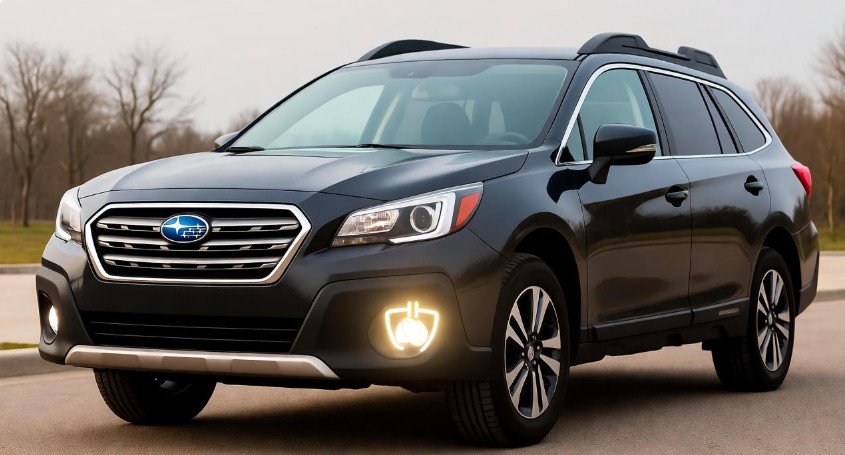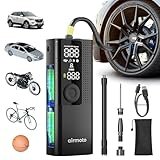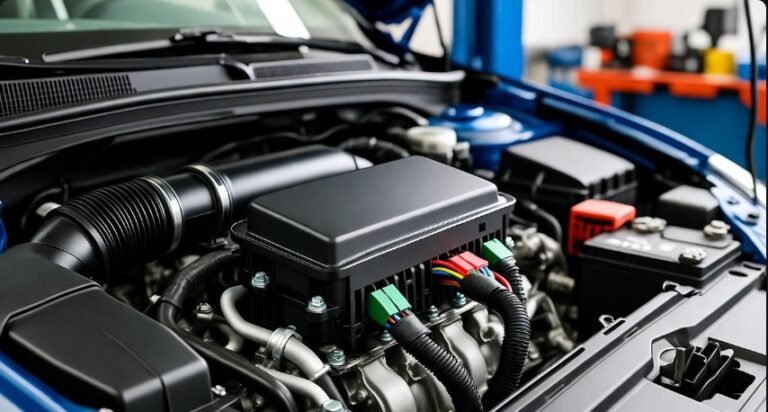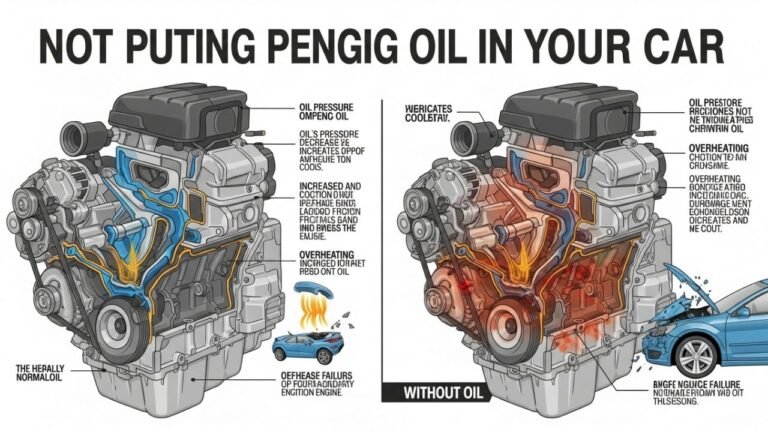How to Reset Tire Pressure Light Subaru Outback: Easy Fixes for Every Driver

If you drive a Subaru Outback, you already know it’s built for adventure — rugged, reliable, and ready for any road. But there’s one small thing that can interrupt that perfect ride: the tire pressure light. You might notice it flicker on during a cold morning or stay on after a long trip. Many drivers panic, thinking something serious is wrong. The good news? In most cases, it’s an easy fix you can handle yourself.
That glowing symbol on your dashboard is part of the Tire Pressure Monitoring System (TPMS). It’s there to keep you safe by alerting you when the air pressure in one or more tires drops below the recommended level. Ignoring it can hurt your gas mileage, reduce traction, and even damage your tires. But once you know why it appears and how to reset it, you’ll never have to worry again.
In this guide, we’ll talk like friends — no complicated jargon. I’ll share the real reasons why the tire pressure light turns on, how to reset tire pressure light Subaru Outback, and tips to prevent it from coming back. So, grab your keys and let’s get your Subaru’s dashboard back to normal.
Understanding Why the Tire Pressure Light Comes On
It’s easy to assume that the tire pressure light means a flat tire. But that’s not always the case. Your Subaru’s TPMS sensor is sensitive — sometimes too sensitive. It reacts to even minor changes, like a drop in temperature or a small loss of air.
Here are some common reasons why this light shows up:
-
Temperature changes: When the weather gets colder, air contracts. Even if your tires were fine yesterday, a chilly morning can lower the pressure enough to trigger the warning light.
-
Slow leaks or punctures: A small nail or debris can cause air to escape slowly. You might not see it, but the TPMS does.
-
Tire wear and aging: Over time, tires lose air naturally, especially if the valve stems are worn.
-
Uneven pressure among tires: If one tire is underinflated compared to others, the system senses it and alerts you.
Think of the TPMS as your car’s way of whispering, “Hey, something feels off down here.” Instead of ignoring it, it’s best to check what’s going on. You’ll not only stay safe but also save money in the long run by preventing uneven wear and poor fuel economy.
How the Tire Pressure Monitoring System Works
Before we get into how to reset it, let’s understand what’s happening behind that dashboard light.
Your Subaru Outback’s TPMS uses tiny pressure sensors inside each tire. These sensors constantly monitor the air pressure and send real-time data to your car’s computer. If any tire falls below the manufacturer’s recommended PSI (pounds per square inch), the system lights up the warning symbol — usually a yellow exclamation point inside a horseshoe shape.
Here’s a simple way to visualize it:
| Tire Status | TPMS Response | What You Should Do |
|---|---|---|
| All tires within normal range | Light stays off | Drive normally |
| One or more tires slightly low | Light turns on | Check and adjust air pressure |
| A sensor malfunction | Light flashes before staying solid | Visit a mechanic for inspection |
Knowing this helps you interpret what your car is trying to tell you. If the light flashes before staying on, it often means a sensor issue. If it’s solid, it usually means low air pressure.
Step-by-Step Guide: How to Reset Tire Pressure Light Subaru Outback
Here comes the part most drivers want — the reset process. The good news? You don’t need fancy tools or a trip to the dealership.
Follow these simple steps:
-
Check your tire pressures first.
Use a reliable tire pressure gauge to ensure all four tires (and the spare, if applicable) are inflated to the correct PSI. You can find this number on a sticker inside the driver’s door or in the owner’s manual. -
Turn the ignition to “ON.”
Don’t start the engine yet. You just need the electronics active. -
Find the TPMS reset button.
It’s usually located under the steering wheel or near the fuse box. It might be labeled “SET” or “TPMS.” -
Press and hold the button.
Hold it down until you see the tire pressure light blink three times. That’s your signal that the reset was successful. -
Release and start the engine.
Drive for about 10–15 minutes at moderate speed. This allows the system to recalibrate and confirm that all pressures are balanced.
If everything was done correctly, the tire pressure light should turn off. It’s like giving your Subaru a fresh start.
When the Tire Pressure Light Won’t Go Away
Now, what if you did all that and the light is still on? Don’t worry — it happens more often than you think. There are a few reasons this might occur.
-
Tires are still underinflated. Even a few PSI below the required level can keep the light on. Double-check each tire again.
-
TPMS sensor malfunction. These sensors are tiny electronic components, and like any gadget, they can fail. If the light flashes before staying steady, it’s probably a sensor issue.
-
Weather impact. After sudden temperature drops, the light may need a few hours or miles of driving to reset itself.
-
Battery in the TPMS sensor is dead. TPMS sensors have batteries that typically last around 5–10 years. If they’re old, it may be time for replacement.
Here’s a quick tip: drive your Outback for a while after inflating your tires. Sometimes, the system needs a little time to recognize that the pressure is back to normal. If it still won’t go off, a visit to a tire shop or Subaru technician might be necessary.
Preventing the Tire Pressure Light from Returning
You don’t want that warning symbol haunting you every few weeks, right? The key is prevention. Keeping your tires in good shape not only avoids the warning light but also makes your car drive smoother and more efficiently.
Here’s what you can do:
-
Check your tire pressure every month. Even if everything feels fine, tires lose air gradually.
-
Use a digital pressure gauge. They’re more accurate than the old pen-style ones.
-
Rotate your tires regularly. Subaru recommends rotation every 6,000–8,000 miles.
-
Replace damaged valve caps and stems. These small parts prevent air leaks.
-
Monitor seasonal changes. As temperatures drop, tire pressure decreases. Adjust accordingly during winter months.
I once ignored my tire pressure light during a road trip because everything “looked fine.” A few miles later, the handling felt off, and sure enough, one tire was 8 PSI below normal. It’s a small reminder — trust your car’s systems. They’re smarter than they look.
Understanding the Recommended Tire Pressure for Subaru Outback
Every car model has its own ideal tire pressure, and Subaru Outback is no exception. Using the wrong pressure — whether too low or too high — can affect everything from comfort to fuel economy.
Here’s a quick reference table:
| Model Year | Front Tire Pressure (PSI) | Rear Tire Pressure (PSI) |
|---|---|---|
| 2015–2019 | 33 | 32 |
| 2020–2022 | 35 | 33 |
| 2023–2025 | 35 | 35 |
Keep in mind that these numbers can vary slightly depending on your tire brand or load conditions. Always double-check the label on the driver’s door jamb — Subaru lists the exact specifications there.
Maintaining the correct PSI not only keeps your TPMS happy but also extends tire life, improves braking, and maximizes fuel efficiency. It’s like keeping your car’s shoes perfectly fitted — comfortable, balanced, and ready for the road.
What Happens If You Ignore the Tire Pressure Light
Many drivers assume the tire pressure light is no big deal and keep driving. But here’s what happens when you ignore it:
-
Reduced fuel economy: Underinflated tires create more rolling resistance, meaning your engine has to work harder.
-
Uneven tire wear: Tires wear out faster when one or more are low on air.
-
Poor handling and braking: Especially on wet or uneven roads, low pressure affects stability and stopping distance.
-
Potential blowouts: If pressure gets too low, the sidewalls flex more, increasing the risk of a blowout — especially during long drives or heat.
Think of it this way: ignoring the tire pressure light is like walking in shoes that are too loose. You might manage for a while, but it’s risky, uncomfortable, and costly in the end.
Advanced Troubleshooting When the Light Stays On
Sometimes, resetting your Subaru Outback’s tire pressure light isn’t enough. If the light remains illuminated despite properly inflated tires, it’s time to dig a bit deeper.
-
Check for a puncture or slow leak. Even small punctures can cause air to escape gradually. Walk around your car and inspect each tire. Look for nails, glass, or sharp debris. You might also hear a faint hissing sound if air is escaping.
-
Inspect the TPMS sensors. Each tire has a sensor inside the rim that communicates with your car’s computer. Sensors can fail due to age, damage, or a dead battery. If one sensor is faulty, the system won’t register correct pressure, and the warning light stays on.
-
Look for software updates. Subaru occasionally releases updates for the TPMS system. A dealership can reprogram or update the system, especially if multiple lights are acting irregularly.
-
Reset the system after tire rotation or replacement. If you recently changed tires or rotated them, the TPMS may need a manual reset. Following the standard reset procedure ensures that the system recalibrates correctly.
Advanced troubleshooting is usually straightforward, but if the problem persists, consulting a professional mechanic is the safest option. It’s better to spend a small amount now than risk a tire failure on the road.
Seasonal Tips for Tire Pressure Management
The tire pressure light often reacts to weather changes. Cold air contracts, causing tire pressure to drop, while hot air expands it. Here’s how to manage tire pressure across the seasons:
-
Winter: Check tire pressure more frequently. Even a 10°F drop can reduce tire pressure by 1–2 PSI. Cold mornings can trigger the warning light unexpectedly.
-
Summer: Hot pavement and high temperatures can slightly increase tire pressure. Be careful not to overinflate, as it can reduce traction and wear tires unevenly.
-
Rainy or wet seasons: Proper tire pressure ensures better contact with the road, reducing hydroplaning risk. Check PSI more often if roads are wet or muddy.
A simple habit of checking tire pressure once a month and before long trips keeps your Subaru Outback safe and prevents unnecessary dashboard warnings.
Tools and Accessories That Make Maintenance Easier
Having the right tools can make tire pressure management effortless. Here are a few recommendations:
-
Digital tire pressure gauge: Accurate and easy to read, especially compared to older analog gauges.
-
Portable air compressor: Useful for topping off tires at home or on the go. Some compressors plug into your car’s 12V socket.
-
TPMS reset tool: Handy if your vehicle doesn’t have a dedicated reset button. Some models can reset each sensor individually.
-
Valve caps with seals: Small but effective in preventing slow leaks from dust and debris.
Using these tools can save time, prevent frustration, and extend the life of your tires. They are simple investments that pay off in safety and convenience.
When to Visit a Professional
While many tire pressure issues are easy to handle at home, there are situations where professional help is necessary:
-
The tire pressure light keeps blinking or won’t turn off after multiple resets.
-
You suspect a sensor is damaged or has a dead battery.
-
Tires have visible damage or deep punctures.
-
You notice uneven tire wear or vibration while driving.
A Subaru-certified mechanic can inspect the TPMS system, replace faulty sensors, repair tires, and ensure everything is calibrated correctly. Think of this as preventive care — avoiding bigger problems and costs later.
Practical Advice From Real Subaru Owners
Many Subaru Outback drivers share similar experiences. One owner recalled driving through a cold morning commute, and the tire pressure light suddenly came on. After checking, they found one tire was slightly low — nothing major, just the temperature effect. Inflating the tire and performing a TPMS reset solved the problem instantly.
Another driver ignored the light for a week. They ended up with uneven tire wear that cost hundreds to fix. The lesson? Don’t underestimate the warning. Treat it as a friendly nudge from your car — a small alert that keeps you and your passengers safe.
Frequently Asked Questions
1. How do I reset the tire pressure light on my Subaru Outback?
Turn the ignition to “ON,” press and hold the TPMS reset button until the light blinks three times, then drive for 10–15 minutes to complete the reset.
2. Can I reset the tire pressure light myself?
Yes, the process is simple and does not require a mechanic unless a sensor is faulty.
3. Why is my tire pressure light on after filling my tires?
It could be due to temperature fluctuations, uneven inflation, or a sensor that needs resetting.
4. Is it safe to drive with the tire pressure light on?
It’s not recommended. Driving with low tire pressure affects handling, fuel efficiency, and tire longevity.
5. How often should I check tire pressure?
At least once a month and before long trips. Seasonal changes can affect PSI, so check more frequently in winter.
6. What if a TPMS sensor is dead?
A dead sensor needs replacement. A Subaru dealership or certified mechanic can install and calibrate a new sensor.
7. Can I ignore the tire pressure light during a short drive?
It’s better not to. Even short distances with underinflated tires can reduce safety and increase wear.
8. Will rotating my tires affect the TPMS system?
Yes, after rotation, it’s recommended to reset the TPMS to ensure the system correctly identifies each tire’s position and pressure.
Conclusion: Keep Your Subaru Outback Rolling Smoothly
Resetting the tire pressure light on Subaru Outback is easy, but the real key is regular maintenance and awareness. Checking tire pressure, understanding seasonal changes, and knowing when to consult a professional ensures safety and prolongs tire life.
Think of the tire pressure light as your Outback’s gentle reminder to stay road-ready. By taking a few simple steps — checking PSI, performing a TPMS reset, and monitoring sensors — you can prevent unexpected stops, improve fuel efficiency, and enjoy smooth, worry-free drives.
Your Subaru Outback is built for adventure, but like any trusted companion, it relies on you to keep it in top condition. A few minutes of care today saves headaches, money, and potential accidents tomorrow.






